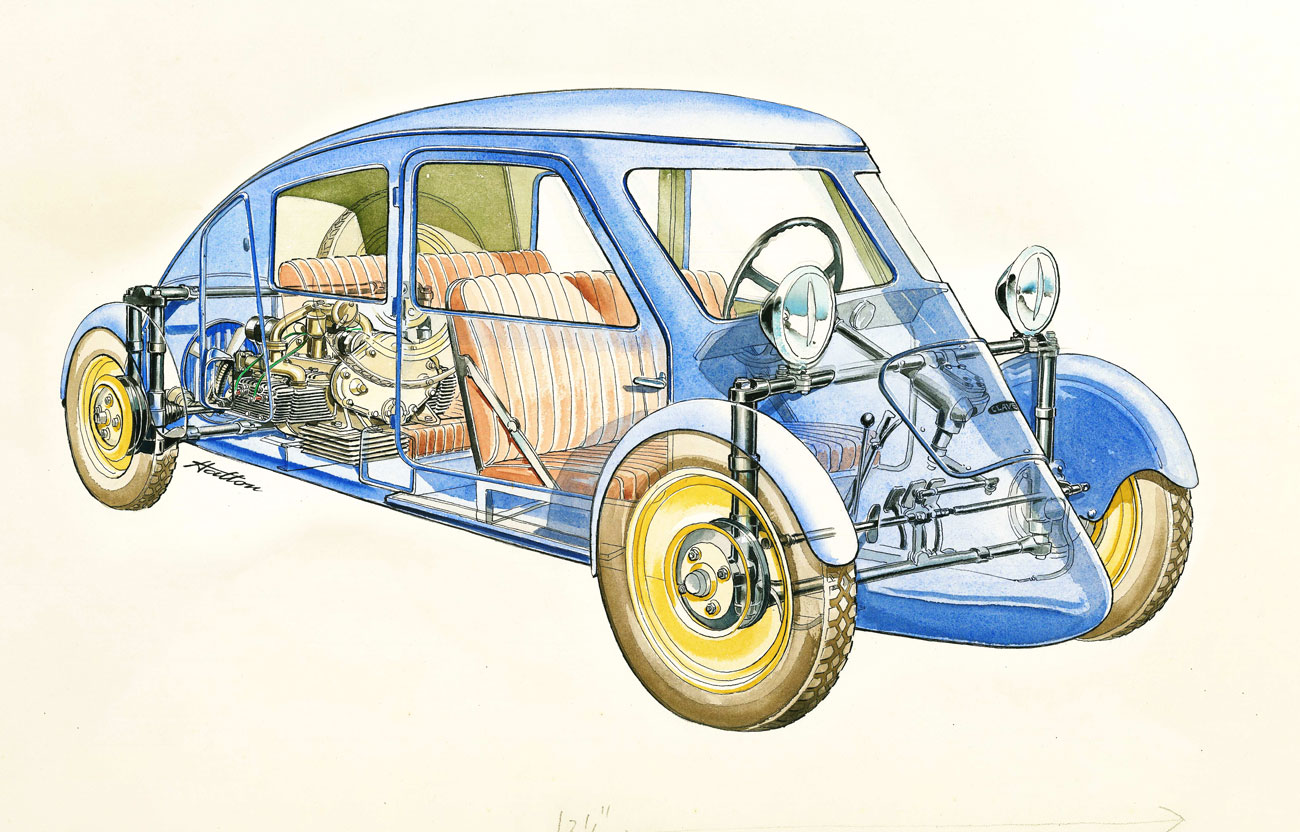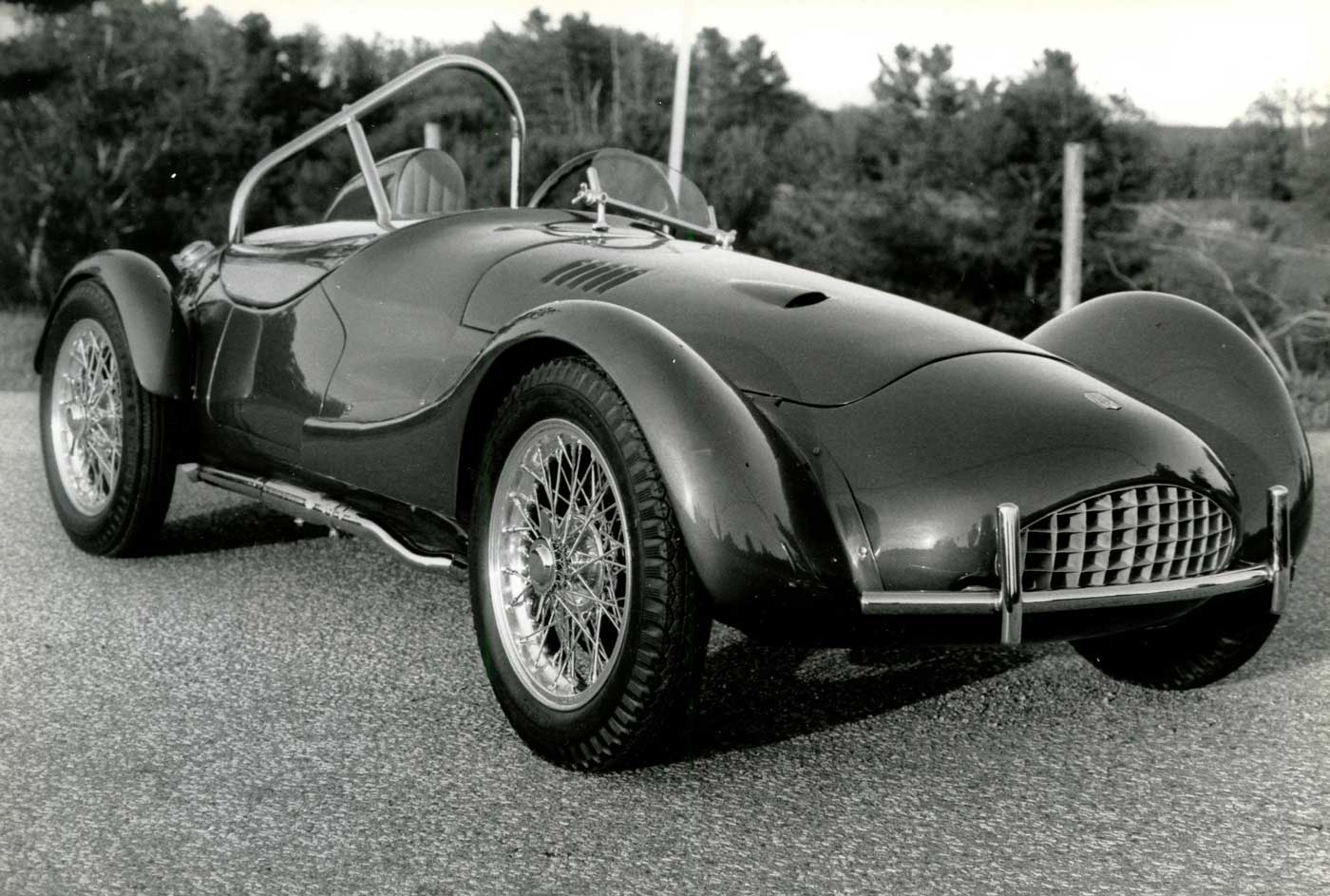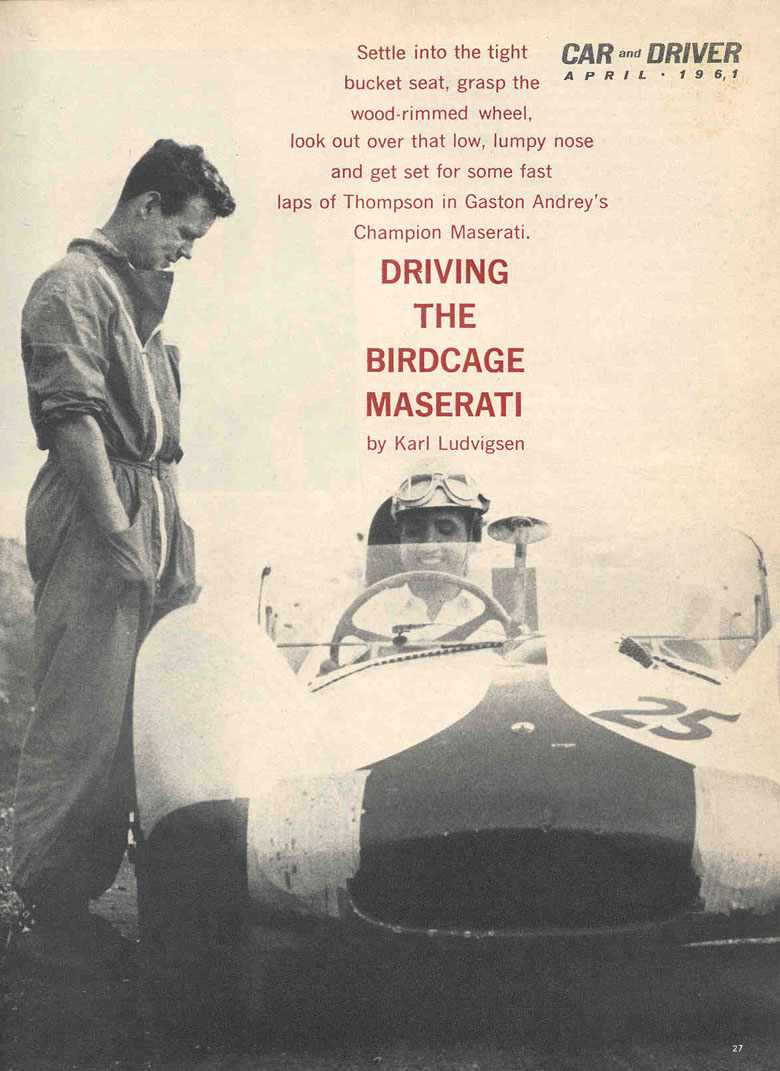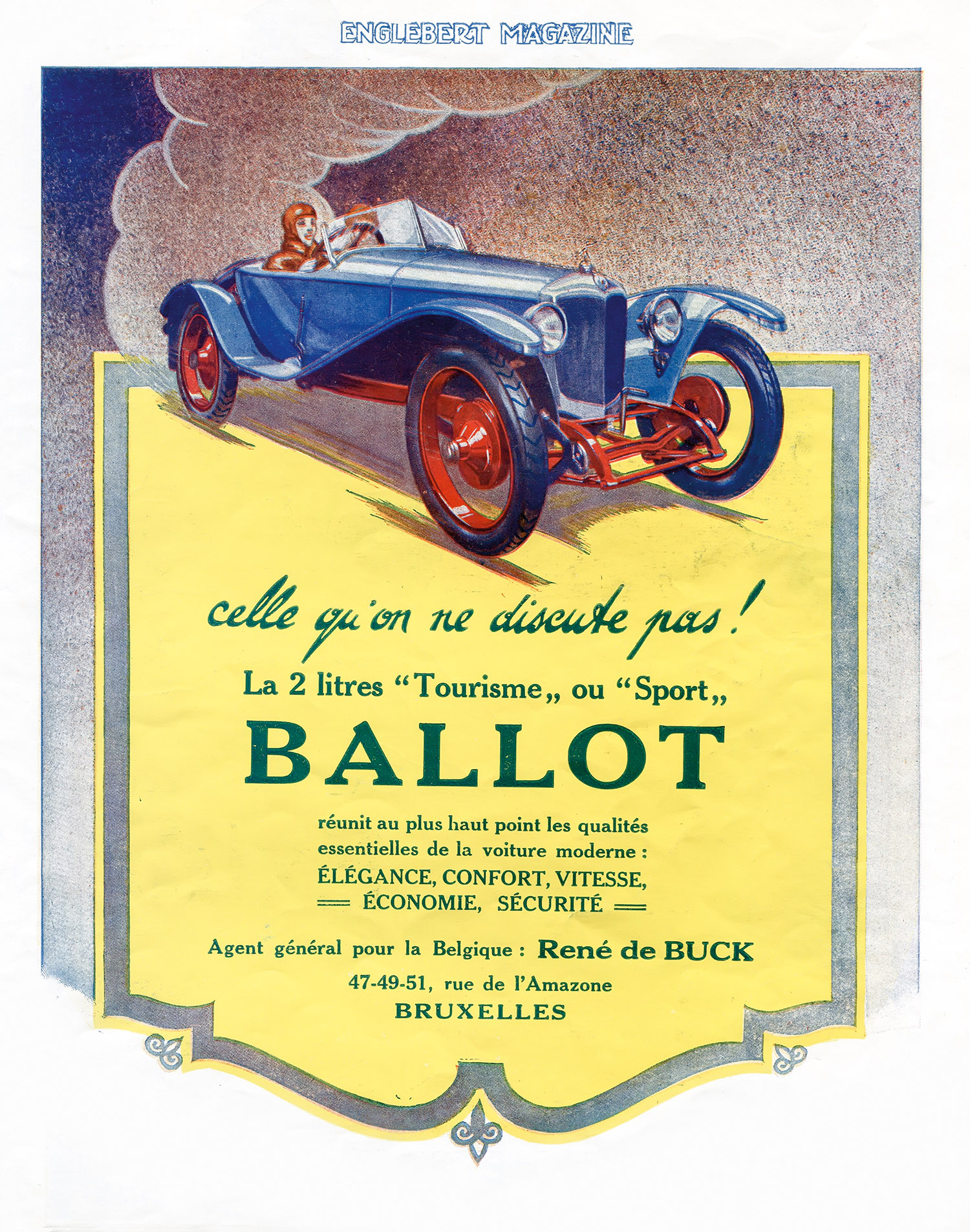We are all getting old, but some of us get old happily and productive while others lack a hobby, a passion, a job perhaps, that give life that extra impetus.
karl ludvigsen
Year in Review: D.M. Bartley
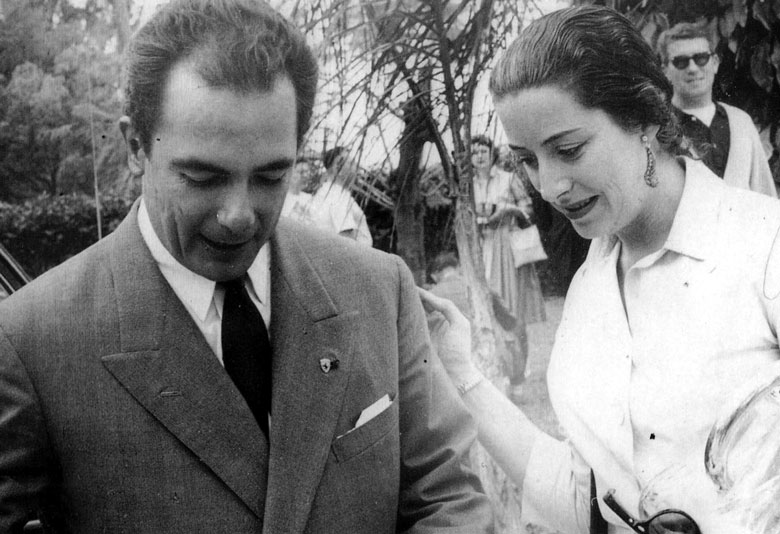
D.M. Bartley with Jean Behra, probably in 1959 at Sebring. We think 1959 as he is wearing a Ferrari lapel pin and placed second at the Sebring 12 hours driving a Ferrari 250 TR 59 with Cliff Allison. Others think that it might be 1957, the year Behra won with Fangio in a Maserati. But wearing a Ferrari lapel pin?
From the Archives, February 2023
Like many of our readers, I often read articles by a ‘D.M. Bartley’ in a variety of automobile magazines in the 1950s and 1960s. And then, as now, I was fascinated by automotive journalists, be they Ken Purdy or Henry Manney, but there was scant information about Bartley, who remained a mystery for a number of years. Years ago, I decided to ask a few writers to tell us what they knew about D.M. Bartley. Jim Sitz, Karl Ludvigsen, and the late Denise McCluggage all pitched in with their impressions. Doing more research, through Clark University, we found Abigail Kimball, Bartley’s friend and neighbor, who was glad to provide even more information about Diana Bartley as well as a few photos from the Bartley collection. We begin with Abigail’s story.
Abigail Kimball:
Diana Bartley was born on June 18, 1926 in Toledo, Ohio. She died on July 31, 2011 at age 85 in New York City.
Paul Wilson, Karl Ludvigsen, Dalton Watson
Paul Wilson at the Larz Anderson Museum
For all of you who have followed the adventures of Paul Wilson as he designs and constructs his own coachwork on the Alfa 6C 2500 chassis, we’ve got some great news for you! On November 30, 7 p.m.- 8:30 p.m., Wilson will formally present his coupe at the prestigious Larz Anderson Automobile Museum in Brookline, Massachusetts.
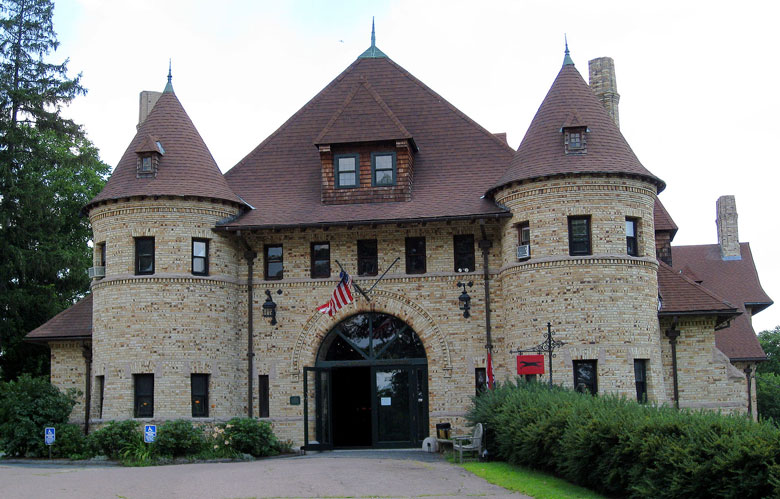
The Larz Automobile Museum in Brookline. Photo by Biruitorul – Own work, Public Domain, https://commons.wikimedia.org/w/index.php?curid=4488803
As we all know and can readily see via the VeloceToday articles, Wilson is a master craftsman, who learned his art as he went along, thinking about each process while limiting his tools and materials to those available to coachbuilders of the 1930s. How he worked through the problems of doors, interiors, trunks, hood and fenders is a fascinating process and reveals his unique genius. Why he used steel instead of aluminum is also interesting as it altered the final form, as he was able to literally design the car as he created it. [Read more…] about Paul Wilson, Karl Ludvigsen, Dalton Watson
The Cars of Émile Claveau Part 4
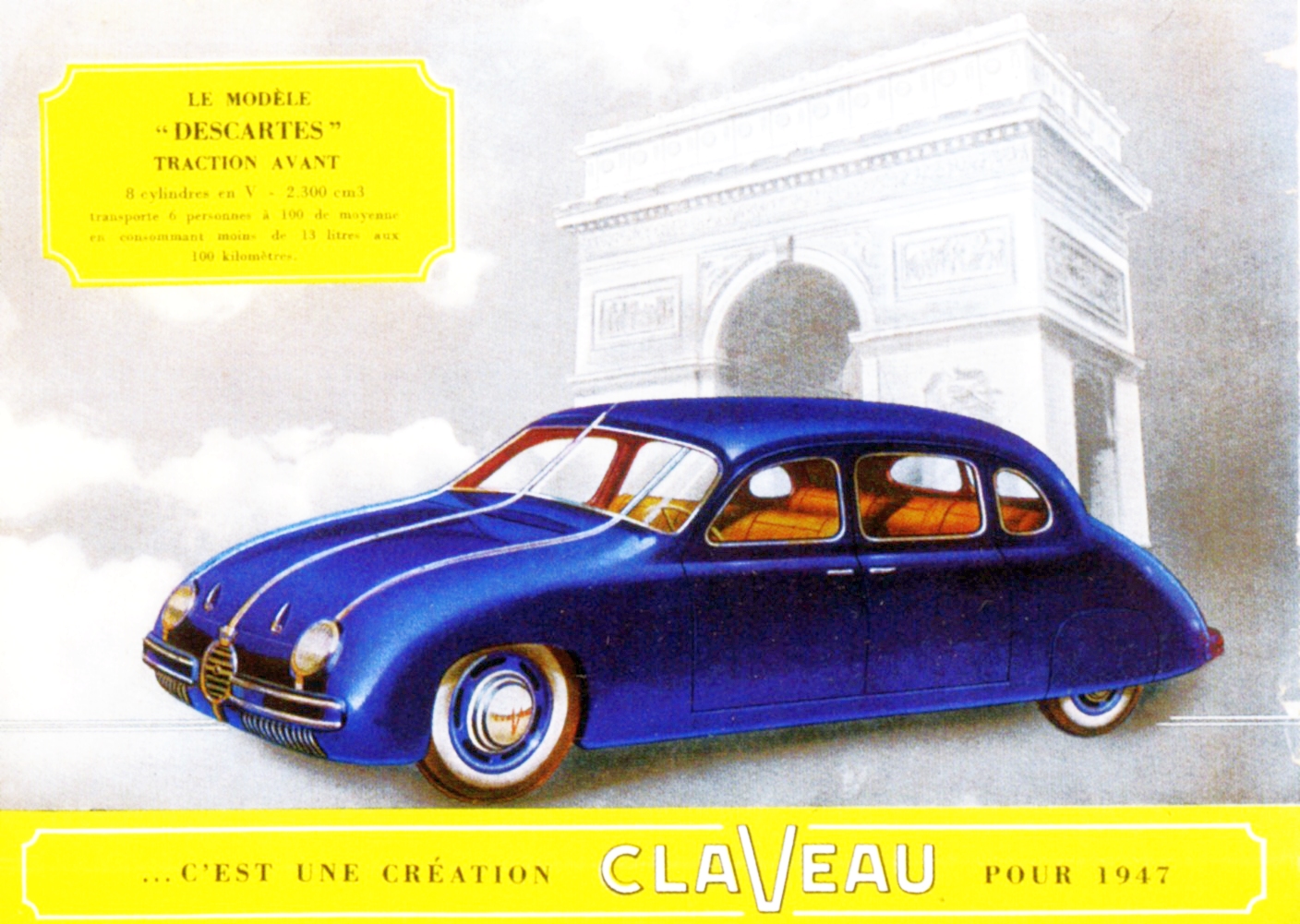
A magnificent brochure heralded the arrival of the Claveau Descartes ‘for 1947’. Seen as a complete car in 1948, the Descartes was awesomely ambitious for a private entrepreneur.
By Karl Ludvigsen
Read Part 1
Read Part 2
Read Part 3
When war intervened Émile Claveau had almost completed the first prototype of a stunningly advanced envelope-bodied six-passenger saloon with a V-8 engine and aluminium alloy body/frame—the Audi A8 of its day. Claveau named it after the philosopher who had been his consistent inspiration: ‘Descartes’. At the 1947 Paris Salon this was present only in scale model form plus its impressive completed engine. This sufficed as a stage from which Claveau could and did discuss the shortcomings of the existing French makers with visiting President Vincent Auriol.
The Cars of Émile Claveau Part 3
By Karl Ludvigsen
The potential of the Claveau 7 CV Sport design was recognized by the magazine Omnia: ‘Sponsored by a big industry, this could well be a people’s car,’ it opined. Although lacking big-industry backing, Automobiles Claveau now at 22 Place de la Madeleine offered an attractive range of mid-engined cars in its handsome catalogue for the 1928 season. This was forecast by its showing at the 1927 Paris Salon, where a strikingly advanced closed version was displayed.
The Cars of Émile Claveau Part 2
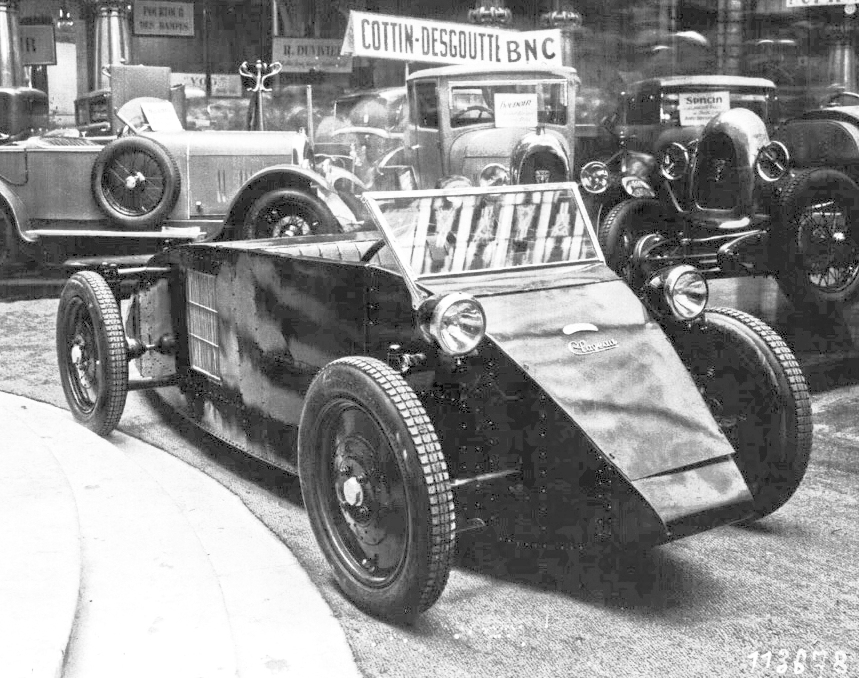
The first Émile Claveau prototype, the 7 CV Sport, contrasts dramatically with its neighbors in the 1926 Paris Salon.
By Karl Ludvigsen
From 1924 Claveau began thinking through the design of an auto from first principles, guided as he was by the Discours of Descartes. On 5 September 1925 he lodged a patent on a suspension system that he pictured as applying to two vehicles, both open models and both teardrop-shaped in plan view. At that time French makers Cottin & Desgouttes and Sizaire-Naudin were leaders in deploying transverse leaf springs as a means of giving independent suspension.
The Cars of Émile Claveau Part 1
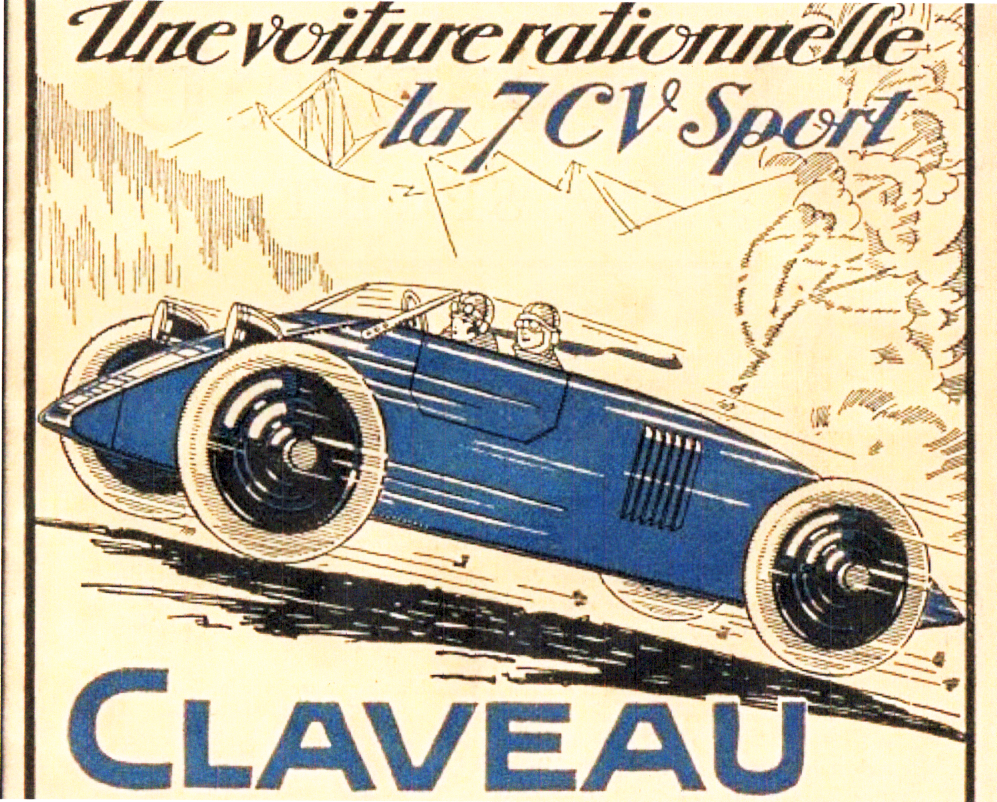
With the launch of his 7 CV Sport in late 1926, Émile Claveau showed that the future could be fun if you were driving the right car.
One of the French Republic’s most talented engineers produced wave after wave of advanced automobiles. Yet both hands would probably suffice to count all the cars he built. Émile Claveau deserves recognition for his undaunted creativity.
By Karl Ludvigsen
French pioneers, among them Panhard et Levassor, de Dion and Renault, made France the early leader in the production of motors and the promotion of motoring. Soon the French were building bigger and faster cars to compete in road races from city to city. They established the first club for motorists, led the founding of the first international association of motoring clubs and organised the first Grand Prix race in 1906.
Who was D.M. Bartley Part 2
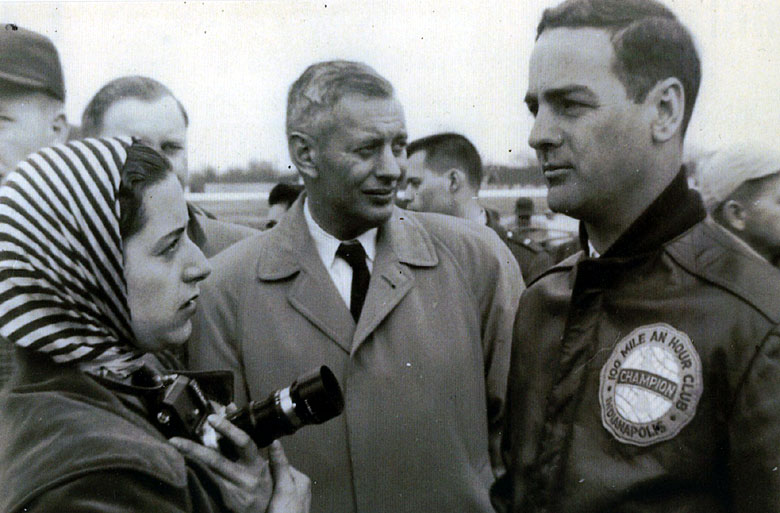
Bartley talks with Pat O’Connor at Trenton, N.J. She was reportedly the first woman journalist to obtain a media pass at Indy.
This week we learn about D.M. Bartley from Denise McCluggage, Karl Ludvigsen, and the Editor.
Denise McCluggage:
Diana Bartley wanted to be accepted for what she was, a hard-working, professional journalist when there simply few women doing that. People today cannot believe how rare women were even on large newspapers. Women might do interviews involving food or fashion or kittens-up-a-tree rescue stories but never hard news.
Who was D.M. Bartley?

D.M. Bartley with Jean Behra, probably in 1959 at Sebring. We think 1959 as he is wearing a Ferrari lapel pin and placed second at the Sebring 12 hours driving a Ferrari 250 TR 59 with Cliff Allison. Others think that it might be 1957, the year Behra won with Fangio in a Maserati. But wearing a Ferrari lapel pin?
Like many of our readers, I often read articles by a ‘D.M. Bartley’ in a variety of automobile magazines in the 1950s and 1960s. And then, as now, I was fascinated by automotive journalists, be they Ken Purdy or Henry Manney, but there was scant information about Bartley, who remained a mystery for a number of years. Years ago, I decided to ask a few writers to tell us what they knew about D.M. Bartley. Jim Sitz, Karl Ludvigsen, and the late Denise McCluggage all pitched in with their impressions. Doing more research, through Clark University, we found Abigail Kimball, Bartley’s friend and neighbor, who was glad to provide even more information about Diana Bartley as well as a few photos from the Bartley collection. We begin with Abigail’s story.
Abigail Kimball:
Diana Bartley was born on June 18, 1926 in Toledo, Ohio. She died on July 31, 2011 at age 85 in New York City.
Bandini 750 Crosley and Offy/Alfa
Below is an article first published in the August 5, 1985 edition of AutoWeek as a Escape Road feature, written by the Editor and featuring the Bandini 750 Sports, then owned by Dave DeBrul. Having gotten the reader suitabley reved up, we follow that with a description of the famous Offy-Bandini. It was known to many of us as “The Offy That Ran”, and seen in the June, 1957 edition of Sports Cars Illustrated written by Karl Ludvigsen. This Bandini has been restored and is now for sale.
By Pete Vack
Ilario Bandini’s main source of income was derived from owning and operating a thriving Lancia dealership in Forli, a small town whose main claim to fame was 1) being the birthplace of Mussolini or 2) the site of Nuvolari’s first victory with a Ferrari, or 3) a town through which the Mille Miglia was routed, depending on what history one chooses to read. [Read more…] about Bandini 750 Crosley and Offy/Alfa
Ludvigsen Drives the Andrey Birdcage
What was it like to drive a Birdcage in 1961? Below, Karl Ludvigsen graphically describes the feel, the noise, and the technique of driving the Magnificent Front Engined Birdcage. This article, originally published in the April 1961 issue of “Car and Driver”, has been republished here with his express permission. Originally published in VeloceToday November 2014.
By Karl Ludvigsen
When you click home the ignition key on the sketchy dash of a Birdcage, a strong red light burns deep within the broad, thumb-sized starter button. To me that light became a symbol of the vast power lurking with this apparently ramshackle piece of machinery, like glowing coals in the crater of a slumbering volcano.
[Read more…] about Ludvigsen Drives the Andrey Birdcage
Ballot Discussion Part 3
By Pete Vack
As we have reported earlier, Daniel Cabart and Gautam Sen have created the Ballot Bible, documenting the founder, the engineers, the heritage, the races and the cars. It is a huge work, with much new information, and in our three reports, we have barely scratched the surface. In this report we will describe the Ballot 2LS from Volume 1, and describe the scope of Volume 2. [Read more…] about Ballot Discussion Part 3

